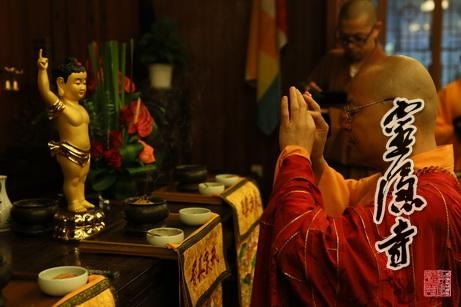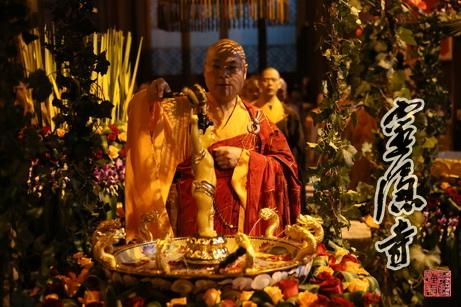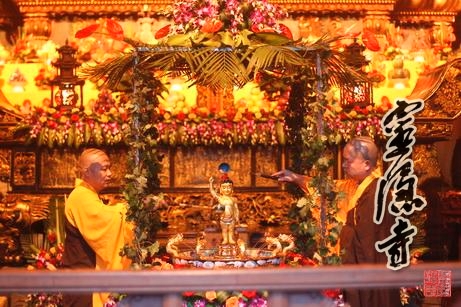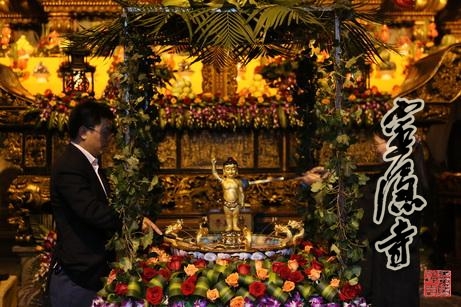


编辑:LY-Temple 日期:2013-05-19 01:08
Lingyin Temple celebrates Buddha's birthday with the traditional Buddha Bathing Ceremony
In heaven or on earth nothing compares with the Buddha,
Throughout the worlds of the ten directions He is matchless.
Of all I have seen in the world, there is nothing at all that is like the Buddha.
On 17 May, 2013 (8 April according to Chinese lunar calendar), the birthday of Shakayamuni Buddha, Lingyin Temple hosted a grand praying ceremony in the Mahavira Hall to shower the statue of Prince Shakayamuni. Abbot Guangquan was invited to lead the ceremony. All Sanghas of the temple, together with lay disciples, participated in the ceremony.

Abbot Guangquan worshipping the Statue of Prince Shakayamuni with burning incense
At 4.30 in the morning, the tranquility in Lingyin Temple was broken by the sound of bells and drums as well as the immaculate, melodious Buddhist music. With great respect, Venerable Guangquan, accompanied by guards of honour, escorted the holy statue of Prince Shakayamuni to the Mahavira Hall and seated himself among the pre-arranged flowers. As the Karma-dāna lit up the incense, the venerables started to chant, and all praised the supreme merit of the Buddha for his libration of all sentients. The whole audience was absorbed in the solemnness of the occasion.

Ven. Guangquan bathing the statue of prince Shakayamuni

Sangha of the temple participating in the bathing ceremony

Believers participating in the bathing ceremony
Buddha Bathing ceremony was important in early Buddhism in ancient India. According to the Book of Cetanā and vipākaphala, the mother of the Buddha, Queen Maha Maya, passed Lumbini on her way back to her parents’ home when she was expecting the delivery, and gave birth to Prince Siddhartha beneath a sal tree. At the very moment, the dragon king of Nanda and Upananda (or according to other legends, nine dragons) spit clean water to shower the prince. This story has been widespread since ancient India, and finds evidence of its popularity in images depicting such a scene on the Buddhist sculptures excavated from Sarnath and other sacred sites in India.